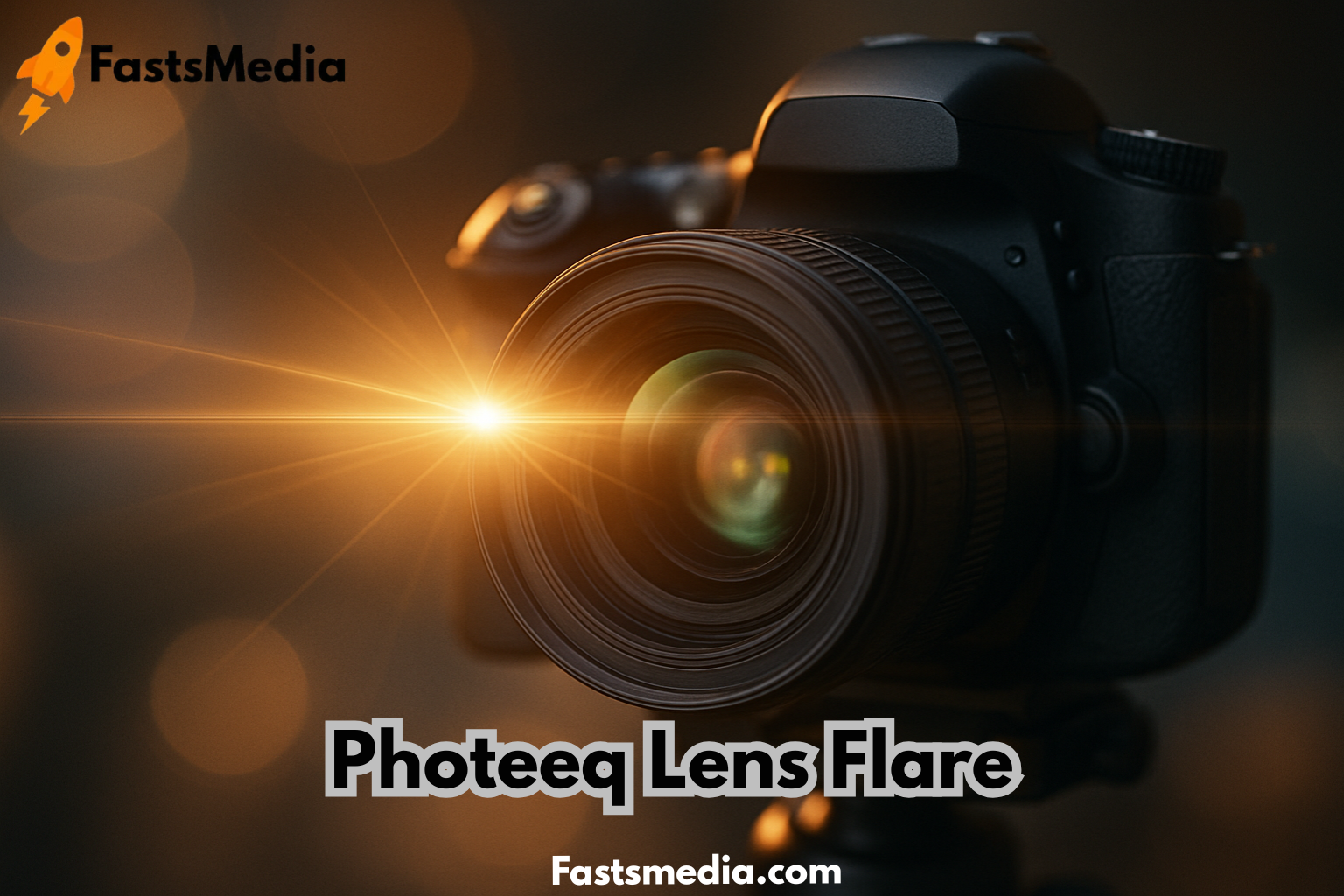Introduction
Photography is not just about capturing subjects—it’s about capturing light. Among the most fascinating visual phenomena in digital imagery is the lens flare—those glowing streaks, orbs, and halos of light that appear when sunlight or artificial light hits the lens. In modern editing, Photeeq Lens Flare has emerged as a popular tool for recreating this cinematic light effect in post-production.
Photeeq Lens Flare enables photographers, graphic designers, and digital artists to enhance photos naturally, adding mood, depth, and atmosphere to images. Whether used subtly to accentuate sunlight or boldly for dramatic flair, this effect is a creative game-changer. In this article, we’ll explore what Photeeq Lens Flare is, how it works, and how to use it effectively without compromising realism.
What Is Photeeq Lens Flare?
Photeeq Lens Flare is a photo-editing feature or plugin designed to simulate the optical light flares that occur when strong light interacts with a camera lens. Instead of relying on random natural lighting, this digital tool allows users to add, control, and customize lens flares in a realistic way.
The word Photeeq is associated with a lightweight photo editing software or plugin suite that focuses on creative filters, overlays, and effects for digital photography. Within this suite, the Lens Flare effect stands out for its ability to imitate natural lighting behavior—something traditionally difficult to reproduce manually.
By applying Photeeq Lens Flare, users can:
- Recreate sunlight or studio lighting effects
- Add cinematic depth and atmosphere
- Draw attention to subjects or focal points
- Create warmth, realism, or nostalgia in imagery
This makes it a valuable resource for photographers aiming for professional, polished, and emotionally engaging results.
Understanding Lens Flare: The Science Behind the Glow
To use Photeeq Lens Flare effectively, it helps to understand why lens flares happen in real life.
The Optical Phenomenon
Lens flare occurs when intense light—like the sun or a bright bulb—enters a camera lens and scatters internally. It bounces between the multiple glass elements inside the lens, producing reflections that manifest as circles, streaks, or hazy glows across the image.
Types of Lens Flare
There are generally two types:
- Ghosting flare: Visible shapes or rings, often with rainbow-like patterns.
- Veiling flare: A soft haze or glow that reduces image contrast.
Photeeq Lens Flare recreates both styles digitally by mimicking how light interacts with optics. It gives users control over intensity, direction, color temperature, and transparency to match natural conditions accurately.
Why Photeeq Lens Flare Is Popular in Photography and Design
A) Cinematic Aesthetics
Lens flares are widely used in film and photography to evoke realism and emotion. A sunburst in a portrait or a flare in a sunset landscape can transform a flat photo into a storytelling moment.
Photeeq’s tool helps replicate these effects even when shooting conditions weren’t ideal. Instead of relying on the sun’s position, editors can add controlled flares to enhance composition.
B) Creative Flexibility
Unlike fixed overlays, Photeeq Lens Flare is fully customizable. You can change:
- Light direction – to match existing shadows
- Opacity and color – for subtle or dramatic tones
- Blend modes – to integrate the effect naturally into photos
This flexibility lets artists experiment freely without overexposing or distorting the original image.
C) Realistic Light Simulation
Photeeq’s algorithm produces organic-looking results that blend seamlessly with photo highlights and reflections. Unlike generic filters, it replicates how actual light interacts with lens surfaces, ensuring authentic-looking visuals.
Step-by-Step Guide: How to Use Photeeq Lens Flare
Here’s a simple guide for applying Photeeq Lens Flare effectively in your editing process:
Step 1: Open Your Image
Load your chosen image in your editing software (such as Photoshop, Lightroom, or the Photeeq editor).
Step 2: Add the Lens Flare Effect
Access the Lens Flare option—usually found under the Effects or Filters tab. Select a flare preset that suits your lighting direction (sunrise, backlight, artificial glow, etc.).
Step 3: Position the Light Source
Drag the flare to align it with your photo’s natural light source—like the sun, lamp, or reflection. This step ensures visual consistency and realism.
Step 4: Adjust Intensity and Color
Use sliders to modify brightness, warmth, and transparency. A golden tone suits daylight scenes, while bluish hues complement night photography.
Step 5: Blend and Mask
Set the layer blending mode to Screen or Overlay for a softer integration. Use masking to remove flare portions covering important details or faces.
Step 6: Refine the Final Look
Zoom out and check your image for natural balance. Subtle adjustments can make the difference between artistic and overdone results.
Pro Tip:
Always start with low opacity (30–50%)—it’s easier to enhance later than to tone down an exaggerated effect.
Best Practices and Creative Tips
Keep It Subtle
Less is often more. The most convincing flares are those that look accidental or organic.
Match the Light Direction
Always ensure the flare originates from the same direction as the primary light source in your image.
Use Color Harmony
Blend flare colors with your photo’s overall tone—warm for sunsets, cool for urban scenes, neutral for studio lighting.
Combine Multiple Flares Carefully
Layering multiple faint flares can add depth, but overdoing it creates clutter.
Avoid Distracting the Viewer
The goal of lens flare is to enhance, not dominate. Keep your subject as the main focus.
Advantages and Limitations
Advantages
- Enhances realism and mood in photography
- Flexible and non-destructive editing process
- Works across different genres—portraits, landscapes, fashion, and advertising
- User-friendly interface for beginners and professionals alike
Limitations
- Overuse can make images look artificial
- Doesn’t replace natural sunlight or perfect exposure
- Some older systems may experience lag with high-resolution flare rendering
By understanding its strengths and weaknesses, users can make the most of Photeeq’s capabilities while maintaining artistic integrity.
Conclusion
Photeeq Lens Flare bridges the gap between artistic creativity and technical precision. By simulating real-world light behavior, it empowers photographers and digital artists to craft compelling, visually rich images that captivate viewers.
When applied thoughtfully, this tool transforms ordinary photos into cinematic compositions full of depth and emotion. Like all great editing tools, its magic lies not in excess—but in subtlety, balance, and purpose.
So, the next time your image feels flat or lacks warmth, consider experimenting with Photeeq Lens Flare. With the right touch, a beam of light might just bring your story to life.
FAQs
1. What is Photeeq Lens Flare used for?
It’s a digital editing tool that simulates natural light flares to enhance photos, adding atmosphere, realism, or drama.
2. Can I use Photeeq Lens Flare in Photoshop or Lightroom?
Yes. It’s compatible with major editing tools and can also be used as overlays or plugins.
3. Does using lens flare affect image quality?
Not if applied properly. Overuse can reduce contrast or realism, but subtle adjustments maintain image integrity.
4. Is Photeeq Lens Flare free to use?
Some basic versions or overlay packs are free, while premium versions may include advanced features.
5. What’s the best way to make flares look natural?
Align them with your image’s existing light source, keep opacity low, and ensure color tones match the overall lighting.

